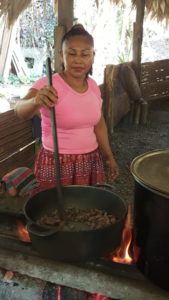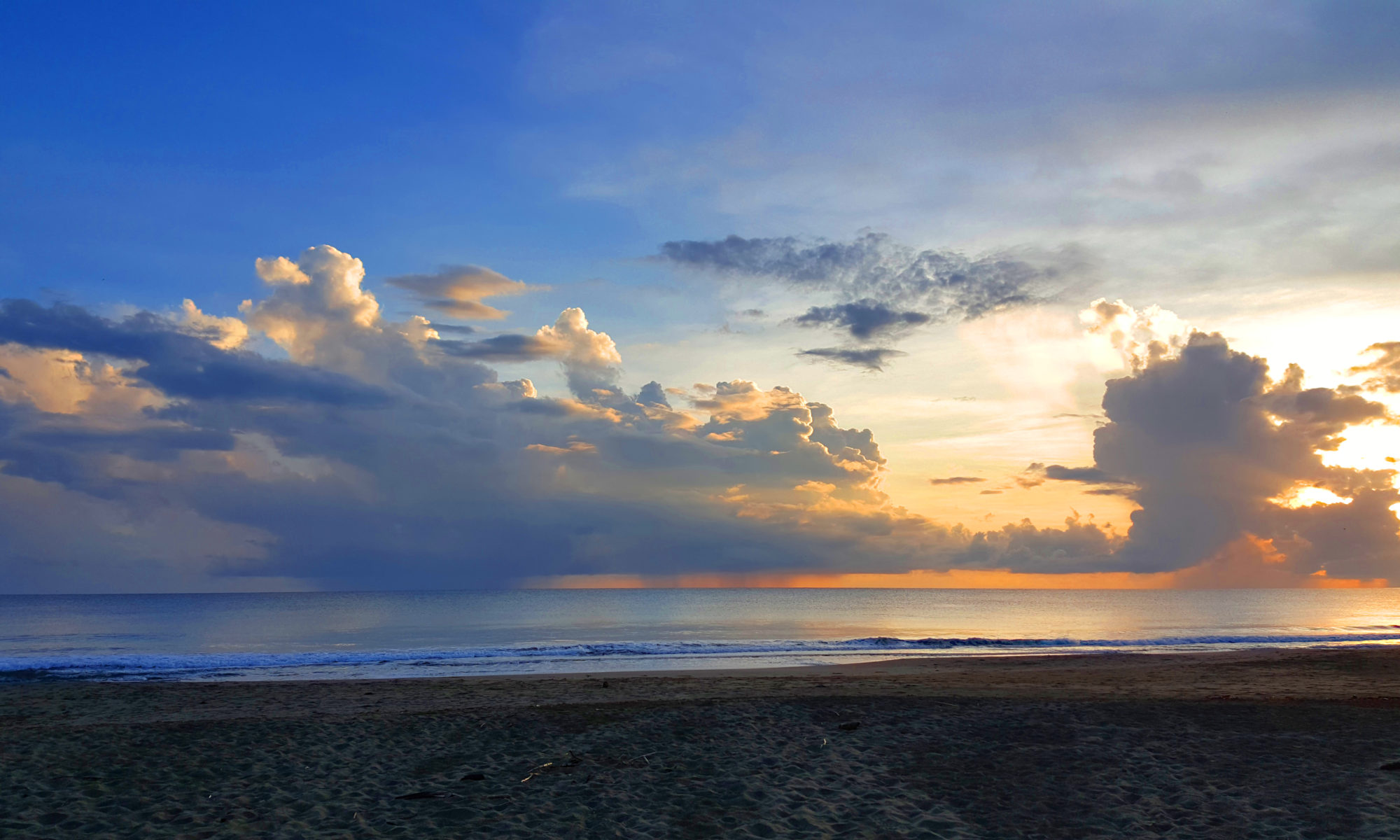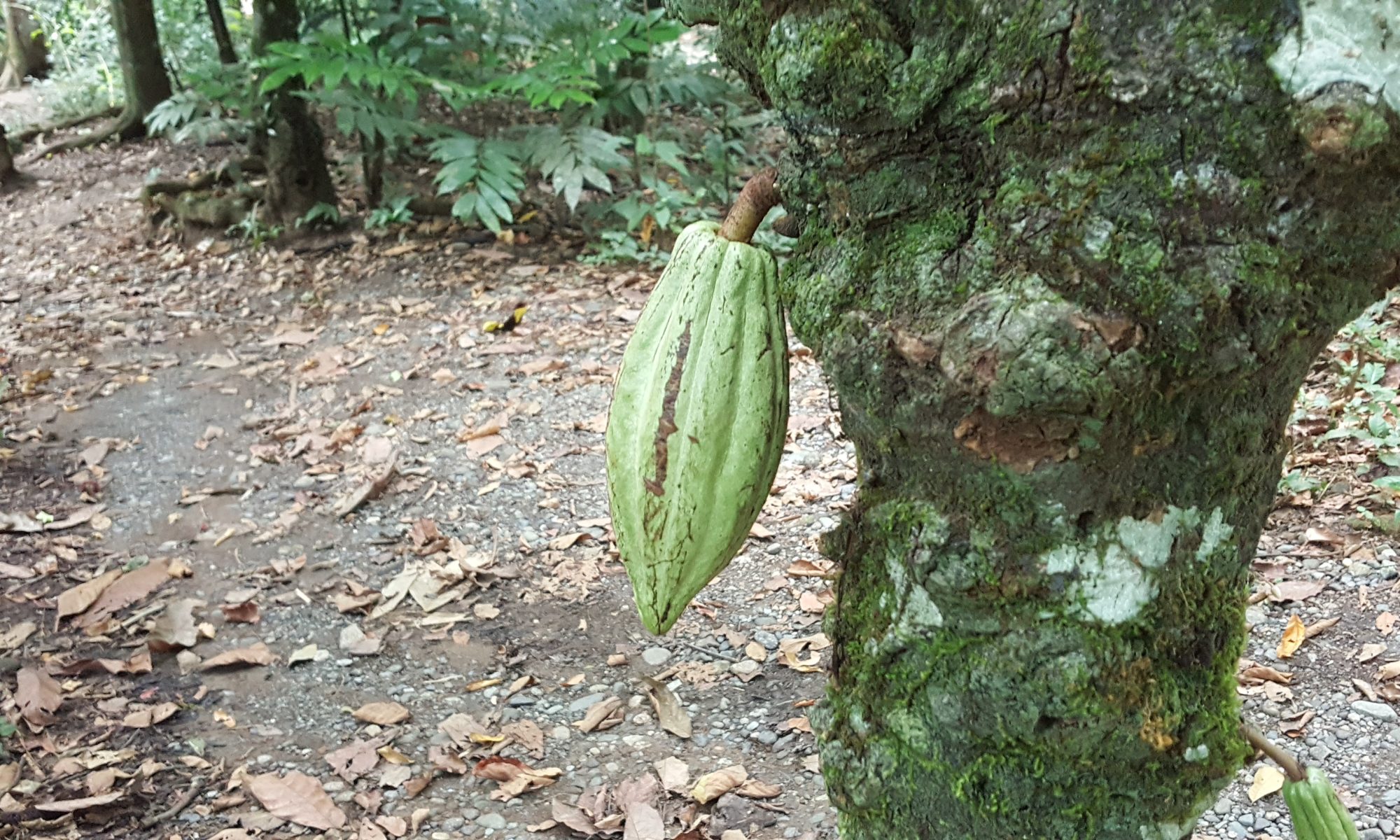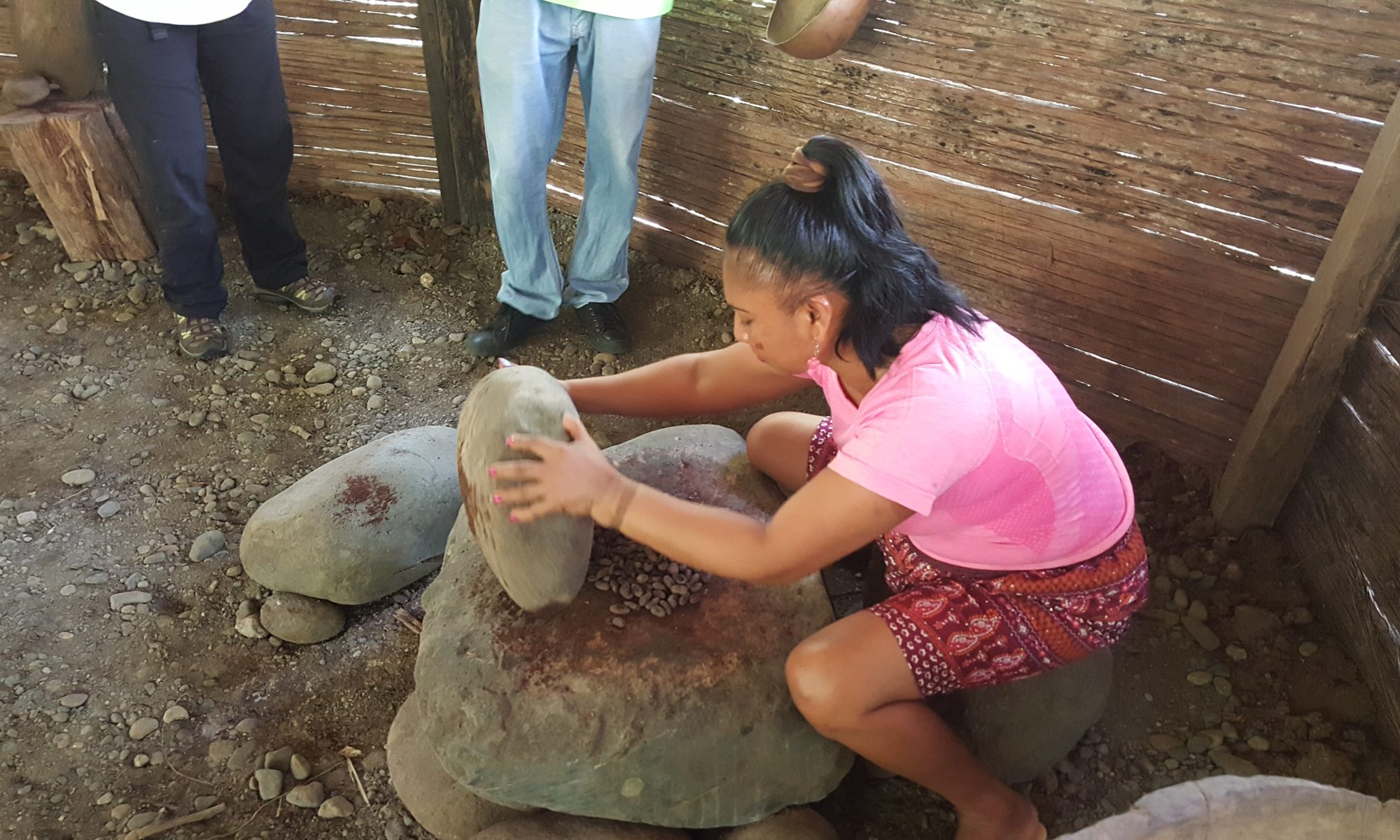Will Costa Rica become the only source of chocolate by 2050?

The above link is a really interesting article in one of our online English newspapers. Chocolate comes from the cacao tree which will only grow 20 ° north or south of the equator and in the correct amount of humidity. Central America and particularly Costa Rica are perfect for that. West Africa has been good for cocoa, but global warming, higher temperatures and the desertification of West Africa along with some plant diseases there may someday, possibly by 2050, eliminate all cocoa farming in West Africa. They are experimenting with hybrid plants there says this month’s National Geographic magazine, but already people are saying the resulting chocolate is not as good.
Cacao is grown all over Costa Rica as small family farm businesses and by some of the indigenous peoples as I described in my recent visit to the Bribri Watsi village and earlier from my visit to Bribri Yorkin as we watched their children suck the sweet white stuff from around the cacao beans and we tried it ourselves.
If you ever visit Costa Rica there are many chocolate tours you can take to learn the complicated process for making one of the world’s favorite sweets.
“All you need is love. But a little chocolate now and then doesn’t hurt.”
― Charles M. Schulz
¡Pura Vida!

















